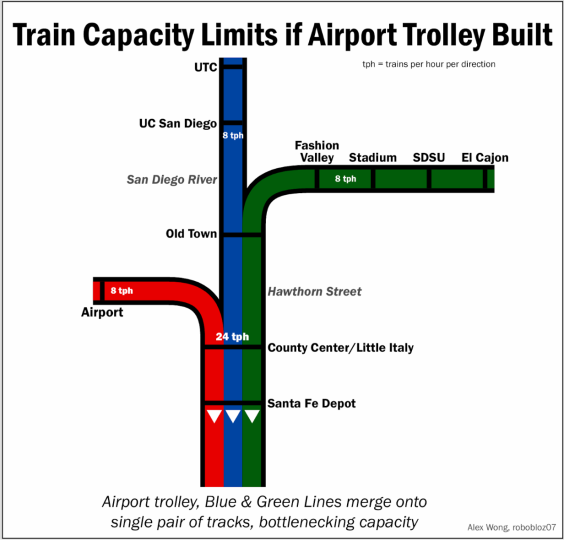On Tuesday, we wrote about the Defense Department’s new rules for the design of their bases and installations. These rules make smart growth the law of the land on hundreds of vast military installations in the U.S. and abroad. There’s more to the story: In this post we examine how a smart growth development model will bring wide-ranging benefits to the defense complex.
Many of the benefits of smart growth are clear enough. By mixing uses, clustering destinations together, and improving transit, sidewalks, and bike facilities, a city -- or military base -- makes driving less necessary and encourages other ways to get around, like walking. That, in turn, reduces congestion, improves health, and gives people back the time they might otherwise spend in their cars.
It can also save lives.
The epidemic of suicide in the military is growing much faster than in the general population. “DoD is suffering from some of the highest rates of suicide ever,” said University of Oregon professor Mark Gillem, the former Air Force architect and planner who helped rewrite the rules that govern master planning on military bases, which were published last year. “And I believe part of that is because our installations have become office parks and not communities.”
When families live scattered around, 30 minutes from base, Gillem said, they don’t have the “esprit de corps” that used to exist.
“And when families live off base, the on-base amenities that used to serve them -- the theaters and chapels and community centers -- no longer have the patronage, so they have to shut down,” Gillem said. “So there are very few places people can go to be amongst their friends and colleagues. And I think that hurts, especially with our high operations tempo and consistent deployments. When you have a spouse that’s hanging out in the middle of nowhere, alone, that’s very hard.”
Gillem’s work to bring walkable development patterns to military bases is partly based on his conviction that by designing better, more attractive and livable installations, the military can lure families back on base, bringing a return to the kind of community that not only builds friendships, but saves lives.
The military uses another rationale to explain its turn away from sprawl and toward smart planning: Walkable development saves a ton of money. The Unified Facilities Criteria [PDF] -- the document that mandates the new rules -- focuses almost exclusively on cost when listing the benefits of the new model. It starts with lower initial costs during planning and construction and moves on to lower life cycle costs (less energy consumption, less pavement), reduced maintenance costs, general efficiency, and, of course, safety – which has its own economic benefit.
A few years ago, Gillem and his team at Urban Collaborative LLC took their show on the road. In the course of short workshops on planning, they were able to show officers at the Parks Reserve Forces Training Area in California how they could “easily save two years in the construction timeline and $300,000 for an environmental impact statement” by building on areas that have already been developed, “They were floored about this,” Gillem said.
Some of it just comes down to educating people that vacant land isn’t always the cheapest and easiest place to build.
At Buckley Air Force Base in Aurora, Colorado, they saved the installation a $1 million environmental impact statement and $30 million in construction costs by finding a better place to locate a new taxiway next to an airstrip. “They had an idea where they were going to put this thing, and it was a terrible idea,” Gillem said. Also at Buckley, they saved $3 million by finding a better site for a combat arms training facility. In all, they found ways to avoid $40 million in costs at a fairly small installation.
At Joint Base Lewis-McChord (still called Ft. Lewis in 2008, when Gillem started working there) near Tacoma, Washington, planners were under a lot of pressure to expand what’s called the cantonment area, the main residential area of the base, into the range and training land. “They’re just not getting more training land, and that’s what these installations need,” Gillem said. “A lot of that is environmentally critical land, too, so we don’t want to build on it anyway.”
So they worked with the community to transform the whole plan. After a three-hour meeting with 100 soldiers, family members, civilian staff and installation leadership -- plus a week-long charrette and 600 online survey responses -- they articulated this vision: "In support of the mission, Soldiers and Families we will create a sustainable community of walkable neighborhoods with identifiable town centers connected by great streets." They called for preserving training ranges by using more compact and mixed-use development, modeled after small towns in New England or the Midwest, and implementing an urban growth boundary. They wanted to see training areas within walking distance of barracks and recreation areas and multiple transportation options.
“But there was some concern that [Ft. Lewis] is out on the left coast, and that’s all green thinking out there -- if you really want to impact the Army, you’ve got to go to the Army’s biggest and best base, and that’s Ft. Hood,” said Gillem. “So that’s where we went."
Ft. Hood, in Killeen, Texas, immediately caught on to the beauty of more compact, walkable development. The base adopted an urban growth boundary and is rapidly replacing its sprawl with infill development -- $1 billion of new investment coming online in the next few years, including a new hospital, a shopping center, and new housing. Much of it is paid for by private contractors who were going to build off-base but changed their minds when they saw the increasing popularity of on-base housing and amenities.
From Ft. Hood, Gillem’s team started collaborating with Buckley Air Force Base in Colorado, the Navy’s Joint Base Pearl Harbor-Hickam in Honolulu, and the Marine Corps Air Station Miramar in San Diego -- one prototype for each branch of the armed forces. They are replicating the same approach to development -- and bringing the same cost savings -- everywhere they go.
By building more livable communities, they’re also encouraging more people to live on base. Gillem says that a few decades ago, 60 to 70 percent of military families lived on base, and now it’s more like 20 to 30 percent, with the rest using their housing allowance in the private market. By bringing more people back on base, there’s less driving back and forth. That eases the pressure for bases to build bigger and bigger gates and parking lots, wider roads, and the accompanying stormwater runoff systems.
Though it will take a while before some bases have the appropriate geography for transit, some are already taking steps to build it. Honolulu is in the process of building a heavy rail system, and the base is working with the local transit authority to situate two stations next to the base at Pearl Harbor-Hickam.
The benefits of the DoD's new UFC are environmental, social, and economic. It’s not just a guidance document for planners: It’s a manifesto on smart planning, livable communities, ecological sustainability, cost effectiveness, placemaking and community building for the biggest builder in the world: the U.S. military.






